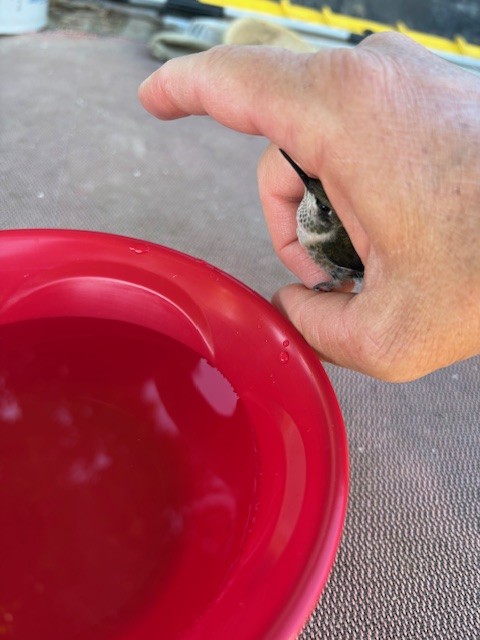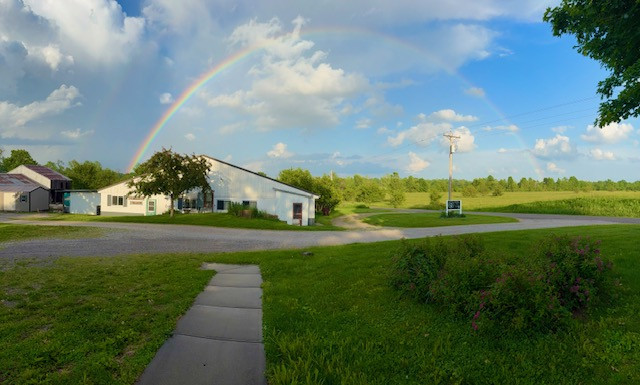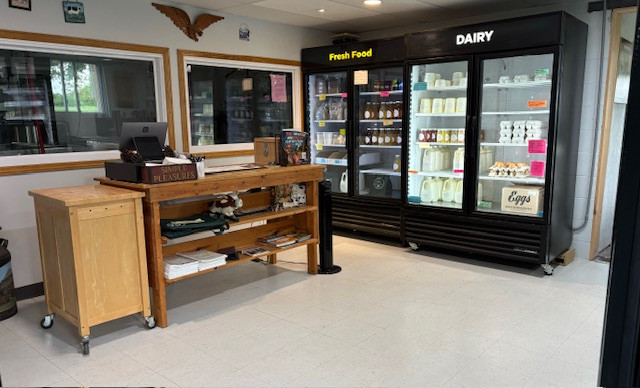Word on the Herd
posted on
October 8, 2024
We have a seasonal dairy, which means that all the cows have their babies around the same time of year. Their lactation lasts several months, and then they all go through the "dry period" before the next calf is born. Often for our cows, that ends up being close to 4 months...when the weather is cold and grass is not growing.
There are different ways of raising the calves that are born every spring, and in our experience we have found there's really no comparison in health to a calf raised on the cow. The thing is, if every cow in our herd were to raise their own calf, it would not be long before the calf took all the milk and left nothing for us to sell!
It's a method that isn't perfect, but we opt for a compromise by using nurse cows. Some of the cows in the herd are chosen to be "nanny cows", and raise 1, 2, or occasionally 3 calves. Raising babies is what these cows do for most of the year, and get "milked" multiple times a day by the young-uns. The cows who are not raising the babies are in the milking herd and are milked once a day, with their milk being used for bottling and processing.

Using nurse cows requires a grafting process. Basically this is teaching the cow to accept another calf (although some cows are very receptive, others require a bit more convincing...and still others fail to ever accept another calf--it can be trial and error), and teaching the calf who her/his new mama is. It's a very management-intensive few weeks! But the nice thing is that the nurse cows and calves become a separate herd from the cows that walk back and forth to the barn for milking daily, and it helps cow movement tremendously to not have a plethora of young calves and fussy mamas slowing the process down. A normal 5 minute walk could easily turn into a 45 minute (or longer) ordeal!


In the dairy industry, it's not uncommon for a replacement heifer calf to receive milk (or milk replacer) for 5-8 weeks. But our calves do not receive grain supplementation, and weaning a 2 month old (or younger) calf onto forage alone will not have very good results for the calf. Babies need the healthy butterfat in mother's milk to avoid hindering many aspects of growth and health. We often wean our calves around 6 months, although longer is also beneficial to the calf in most cases. The calves have well developed rumens at this point and can efficiently utilize forages as their sole diet.

The reason we often wean around October is because this time of year we usually need more milk! Adding a few more cows for the last few weeks of the lactation gives a bit of a boost to the supply.
The weaning process happens in two phases. There are specially designed nose rings that can be temporarily attached to the calf's nose which (usually) prevents the calf from nursing. It has sharp points on the surface which cause mama not to want the calf nosing around. Plus, it sort of covers the calf's mouth to prevent her from being able to latch on.
We have to run each calf through the chute and catch her in the head gate to put the nose ring in. Once it's in, the calf returns to mama's side. Over the next few days, the calf gets used to not getting milk. Neither party is overly happy about it, and there is still bawling that occurs, but the stress level is lower because the cows and calves can remain together. After several days, the calves are beginning to get used to not drinking milk, and then when we separate them out into their own herd, they are not so stressed. In fact, when we wean this way and then separate, the cows sometimes bawl for a couple more days but the calves are usually pretty quiet! Once everyone settles in to their new separate herds and going through fences to reunite without permission doesn't happen, then we can remove the weaning rings from the calves' noses.

So this photo above was the scene Monday. Two chubby calves feasting on some milk in this photo. Thursday is when we plan to put the rings in. And hopefully Friday morning we'll have several more gallons of milk going into the milk tank! There will be some upheaval in the hierarchy I'm sure, as cows that have been apart for months will have to establish new pecking orders. But eventually they'll settle into the new routine and hopefully the last few weeks of milking season will glide by without any big hiccups ;).





